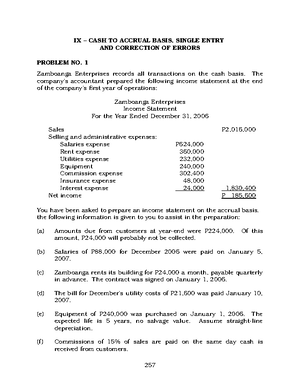- Information
- AI Chat
Was this document helpful?
Syllabus-Auditing-and-Assurance Concepts-and-Applications-1
Course: Accountancy (BSA2)
729 Documents
Students shared 729 documents in this course
University: Quezon City University
Was this document helpful?

BACHELOR OF SCIENCE IN ACCOUNTANCY
COURSE TITLE : Auditing and Assurance: Concepts and Applications 1
COURSE CODE : ACPAUD2
NUMBER OFUNITS : 3 Units
PRE-REQUISITE SUBJECT : Auditing and Assurance Principles
Course Description:
This course deals with the study and application of audit procedures in the external audit
of financial statements. It tackles detailed process and approaches to situational problems
usually encountered in the audit of cash, revenue and receipt cycle, expenditure and
disbursement cycle, and production cycle.
Course Learning Outcomes:
Upon completion of the course the students will be able to:
A. Cognitive
1. Identify audit objectives and evaluate internal controls considerations for audit of
cash, revenue and receipt cycle, expenditure and disbursement cycle, and
production cycle
2. Understand the process for audit of cash, revenue and receipt cycle, expenditure
and disbursement cycle, and production cycle
B. Affective
1. Appreciate the importance of the audit planning and internal control considerations
in audit process
2. Appreciate the importance of audit documentation in the audit process
Psychomotor
1. Formulate and apply appropriate audit procedures for audit of cash, revenue and
receipt cycle, expenditure and disbursement cycle, and production cycle
2. Prepare and complete audit documentations related to cash, revenue and receipt
cycle, expenditure and disbursement cycle, and production cycle as bases for the
audit report











